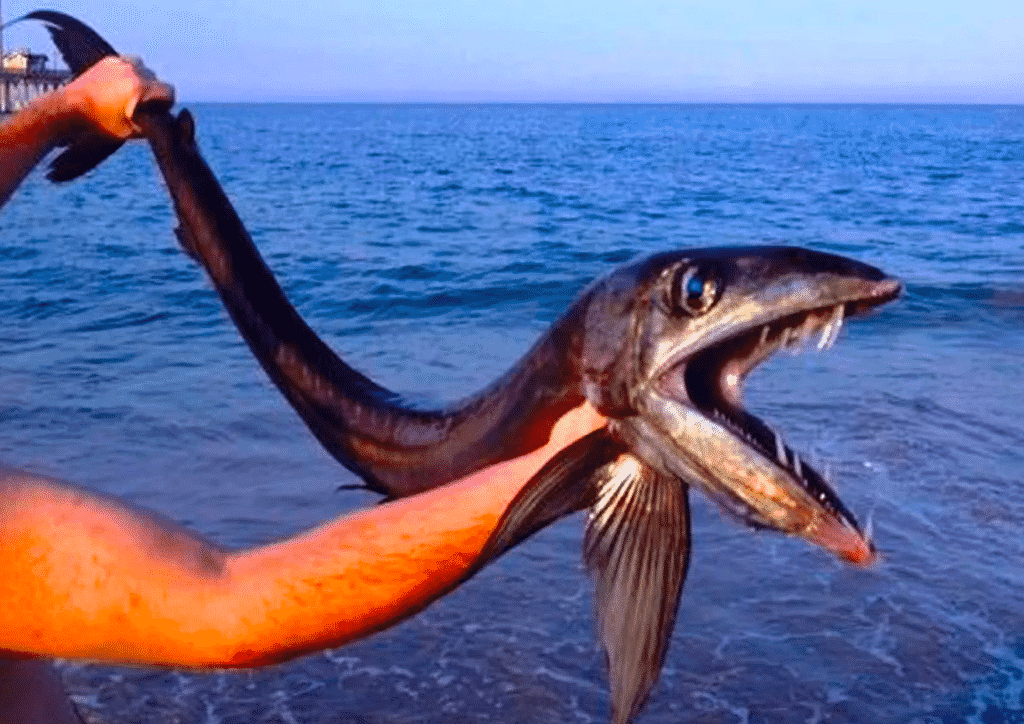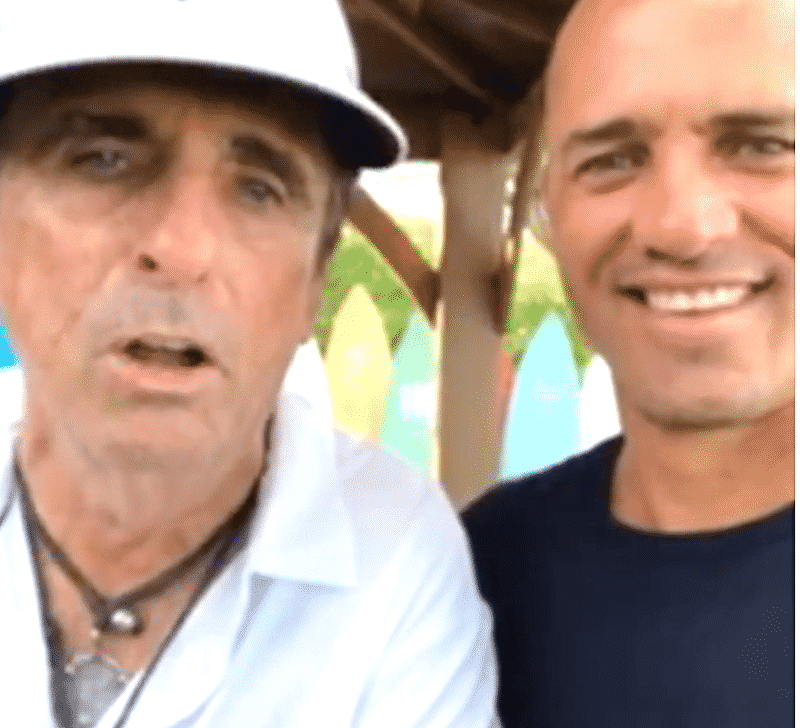San Clemente surfboard artist to the stars is real sick and it'd be nice to see him back in the water…
Drew Brophy is ill and needs your long green.
Yes, that Drew Brophy, the artist who painted the look of modern American surfing with his Posca pens and sideburns.
He’s got the Covid with all the trimmings, including ventilator.
Was Drew vaxxed? He can’t say.
Regardless, the cat needs some help. Being an independent contractor doesn’t come with goldenrod health insurance.
Lost Surfboards’ Instagram threw up a link to a sad letter on Gofundme.com from Drew’s brother.
We know Drew’s art from the Lost boards of the nineties. His work is a straight-punch-to-the face.
Brophy started his career at ProGlass in Haleiwa after an overheard conversation between drunks at a hometown Myrtle Beach bar one night.
They needed a new airbrusher. Drew boarded a plane the next day and was gone.
Brophy found himself buried in board painting demand, doing jobs for multiple shapers. Plenty of pro boards fell under his brush too, painting pretty decks and rails for heavies Tom Curren, Tom Carroll, and others.
Between jobs, Brophy managed to spend ample time in the water, too — opportunities to zip into Pipeline barrels included. (Brophy is a serious big-wave bull fighter. Thumb through the April 1995 issue of SURFER, and you’ll see a beautiful photo of Drew wrapped tight in a perfect Puerto Escondido right.)
But he couldn’t pay the bills, existing on a slim diet of rice and his Hawaiian experience came to an end after a vicious hit to the face courtesy of Pipe reef.
Months of recovery followed, forcing Drew out of work and back to the mainland.
In 1996, he found a home sleeping in a friend’s garage and looking for work in the middle of San Clemente, basecamp for what was really goin’ on. Stewart picked up Brophy to paint longboards, paying about twenty dollars a board.
But the gentle airbrush fades required, leftover from the eighties, wasn’t quite his bag. Brophy had begun experimenting with paint pens from the Japanese company Uni-Posca and developed the raw, color-drenched, I-don’t-care-what-you-think style that would define his art.
Looking for a better gig, he walked into Matt Biolos’ shaping room to see that he was also a disciple of the pens.
Biolos says, “I was doing similar stuff as far back as ’87. Painting flaming waves, skulls, demons, monsters, mushrooms… rock and roll album covers etc., on Archy’s and Christian Fletcher’s boards. They were getting really big magazine exposure on my (rudimentary) paint jobs. It’s how I first built my name. We used this type of imagery on all our early tees, from ’93 on, as well. As my shaping took over, I no longer had the time to spend hand painting boards. Drew knew we had a history of it, but was not seeing it on my boards much anymore. He figured I would be open to him bringing it back. I was, he did, and he ran with it, far beyond anyone’s previous production surfboard numbers.
“His partnering up with us was really good timing. All the parts were moving well. It coincided with the popularity of our surf videos, like ‘What’s really Goin’ Wrong’ and ‘5’5″ x 19 1/4“‘. These videos brought our name into everyone’s living rooms. Surfers like Chris Ward and Cory Lopez were making a lot of impact on our boards. My shapes were now getting sought after. We had the Round Nose Fish and these two teen phenoms. Drew’s paintings gave the boards a point of difference, at retail, and everything sort of worked together.”
View this post on Instagram
After a quick test of his skill, he brought Drew on board to bring his color from tip to tail of Lost Surfboards. If Biolos’ genius with a planer wasn’t enough to hook a surfer on a Lost board, Drew’s art was the gravy.
“We were together a lot in the early days, for sure. People thought we were brothers,” Biolos says. “As the business grew, we moved the shaping rooms down the street and the painting moved to a warehouse, up El Camino Real, downtown San Clemente. We raised some hell at night as well. We traveled around the world, building the …Lost brand and our own brands. Peru, Brazil, Europe, Japan. We surfed and had a lot of fun.”
With Mayhem shapes filling racks in shops worldwide, Drew’s work became instantly recognizable, doubtlessly sending groms on every coast racing to the craft store in search of wide-tip Sharpies to ruin their boards with.
In each of his painted boards, heaving rows of monstrous waves march like soldiers taking a beach, screaming blood-orange suns stretch their angry rays across the sky, cartoonish skulls line the impact zones, laughing. Dripping and tripping down the rails, Drew’s images carried the surf-art genre in a direction that surely would have made Rick Griffin smile wide.
His current business, Son of the Sea, focuses on selling Brophy’s original art. But it also does something rare and gorgeous: Brophy gives away his painting secrets through video and demonstrations worldwide. While many artists might prefer to keep tricks close to the chest, he shares his techniques without a blink.
Brophy surfs mainly near his house at San Clemente Pier, Lowers or Salt Creek when it’s good, and even tries to get a couple days at up north at Mavericks and Ocean Beach each year.
But now he’s sick and it’d be nice to see him back in the water.
If you are so inclined, throw a buck his way.







